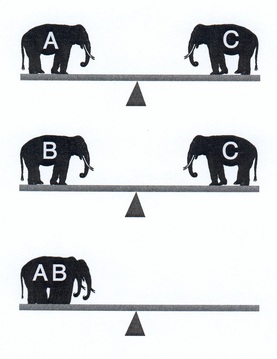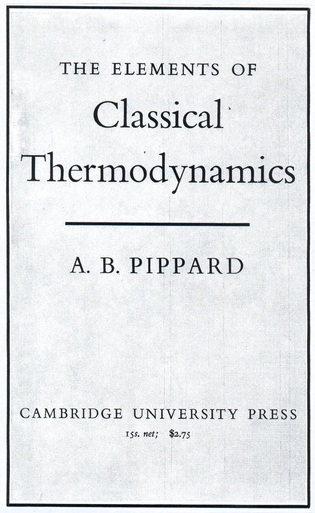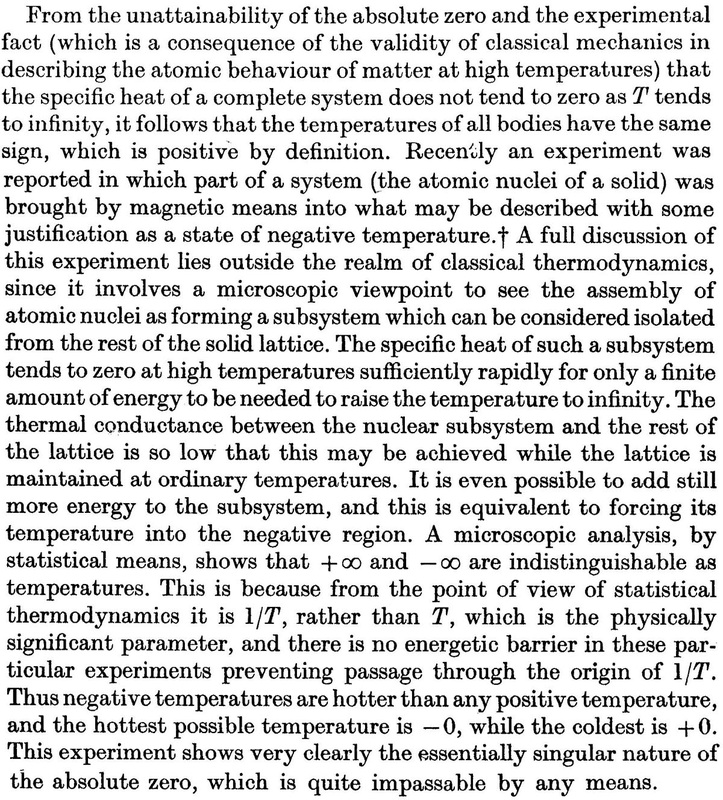LAWS OF PACHYDERMODYNAMICS
ZEROTH LAW
If A,B, and C are three elephants, and A and B are separately in equilibrium with C, then A and B are in equilibrium with each other.
FIRST LAW
The work done by an elephant, plus the heat change of the elephant, is constant.
SECOND LAW
Isolated elephants become increasingly disorderly (measured by elephantropy) as time passes.
THIRD LAW
Elphantropy tends to zero as temperature tends to (absolute) zero.
FOURTH LAW
According to legend there used to be a fourth law of pachydermodynamics, but it lost its footing and fell off the List.
If A,B, and C are three elephants, and A and B are separately in equilibrium with C, then A and B are in equilibrium with each other.
FIRST LAW
The work done by an elephant, plus the heat change of the elephant, is constant.
SECOND LAW
Isolated elephants become increasingly disorderly (measured by elephantropy) as time passes.
THIRD LAW
Elphantropy tends to zero as temperature tends to (absolute) zero.
FOURTH LAW
According to legend there used to be a fourth law of pachydermodynamics, but it lost its footing and fell off the List.
|
TECHNICAL DATA ON THE SECOND LAW Elephantropy S = -N log N where N is the number of elephants. Don’t ask me why it’s called ‘S’. According to Discworld legend, originally N = 5, so S[FIFTH ELEPHANT] = -3.494850022 Later, N decreased to 4, so that nowadays S = -2.408239965 Which is larger thanks to the minus sign. So elephantropy has increased over time, consistent with the second law. |
EXPERIMENTAL EVIDENCE
The zeroth law implies that if two elephants stand at the same end of a seesaw, it will balance. This is true provided the seesaw is sufficiently rusty. The first law implies that when an elephant does work, it cools down. This is true if you provide access to a river, in which case it cools down afterwards. The second law implies that a dead elephant is more disorderly than a live one. The data here are controversial. The dead ones do make a bit of a mess for a while. The third law implies that elephants are better behaved when they are really, really cold. Superficially the third law conflicts with the second law since a really, really cold elephant is dead so (by the second law) it has very large elephantropy, not zero. That is, ∞ = 0 This is known as Furmat’s First Formula, and the same mistake is often made by beginners. It can be reinterpreted by the process of renormalization, as follows: 2∞ - ∞ = 2∞ - 0 ∞ = 2∞ which is true. Furmat’s Last Word states that since a really, really cold elephant is dead then it cannot be disorderly, which is consistent with the third law, so there! But, as noted with regard to the second law, this statement is controversial. |
IF YOU THINK THAT’S GOBBLEDEGOOK...



